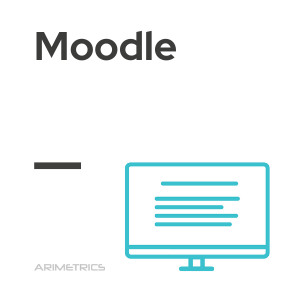
Definition:
Moodle is an online, open source learning platform. Initially, Moodle was conceived as a platform to offer professionals in the field of education an online learning technology. It was intended for custom environments to encourage interaction, research, and collaboration.
Now, Moodle is used by organisations that are not just in the education sector. Different companies use this tool for tasks such as: the development of online courses, the recruitment and interview process, competency-based recruitment and management or the creation of communities of experts or practice.
It currently has a database that includes more than 21 million users and is translated into about 91 languages.
History of Moodle
Moodle is a learning management tool (LMS) created by Martin Dougiamas with PHP technology and MySQL databases. Its first version appeared in 2002, but it is continuously updated and has improvements every six months. It is designed to make it easier for teachers to manage online courses, both for distance learning and reinforcement in the case of blended or face-to-face teaching. Its acronym in English stands for Modular Object-Oriented Dynamic Learning Environment or, what is the same, Dynamic Object Oriented and Modular Learning Environment.
How Moodle works
The Moodle Learning CMS works by forming communities of teachers and students. It is essentially intended for distance education. The process is carried out through the internet, allowing access from any device. It allows you to start conversations between the users of the tool in addition to sharing documents and content. It is a virtual classroom that allows more and better communication.
Moodle features
Moodle defines itself as an all-in-one learning platform, as it allows you to integrate external collaboration tools,such as forums, wikis, chats and blogs. It offers a modular configuration and the possibility to add plugins and add-ons.
There are specific functionalities for teachers,who have the possibility of using a simple page with documents that can be downloaded or build a complex structure with the monitoring of the progress of their students to offer more advanced content. To do this, they can create groups of students and thus distinguish them by classes or levels.
Moodle has a mobile application on both Android and iOS that allows you to check the content of the courses even when you are not online, receive notifications and share images and videos.
Advantages of Moodle
- It’s free. It is a free application whose objective is free teaching.
- The interface has been developed by education professionals, psychologists and educational psychologists.
- It’s easy and intuitive. It is designed to be accessible to the public.
- It allows content in various formats such as video, images or interactive content.
- It is compatible with all web browsers. It is free software.
- Designed based on constructivist social pedagogy.
- It is used by many public administrations and universities.
Where to download Moodle
Moodle can be downloaded for free and in its latest version from its official website. Assisted by a significant community of users you can find modules and plugins that allow you to update the software such as survey modules or language packs.
